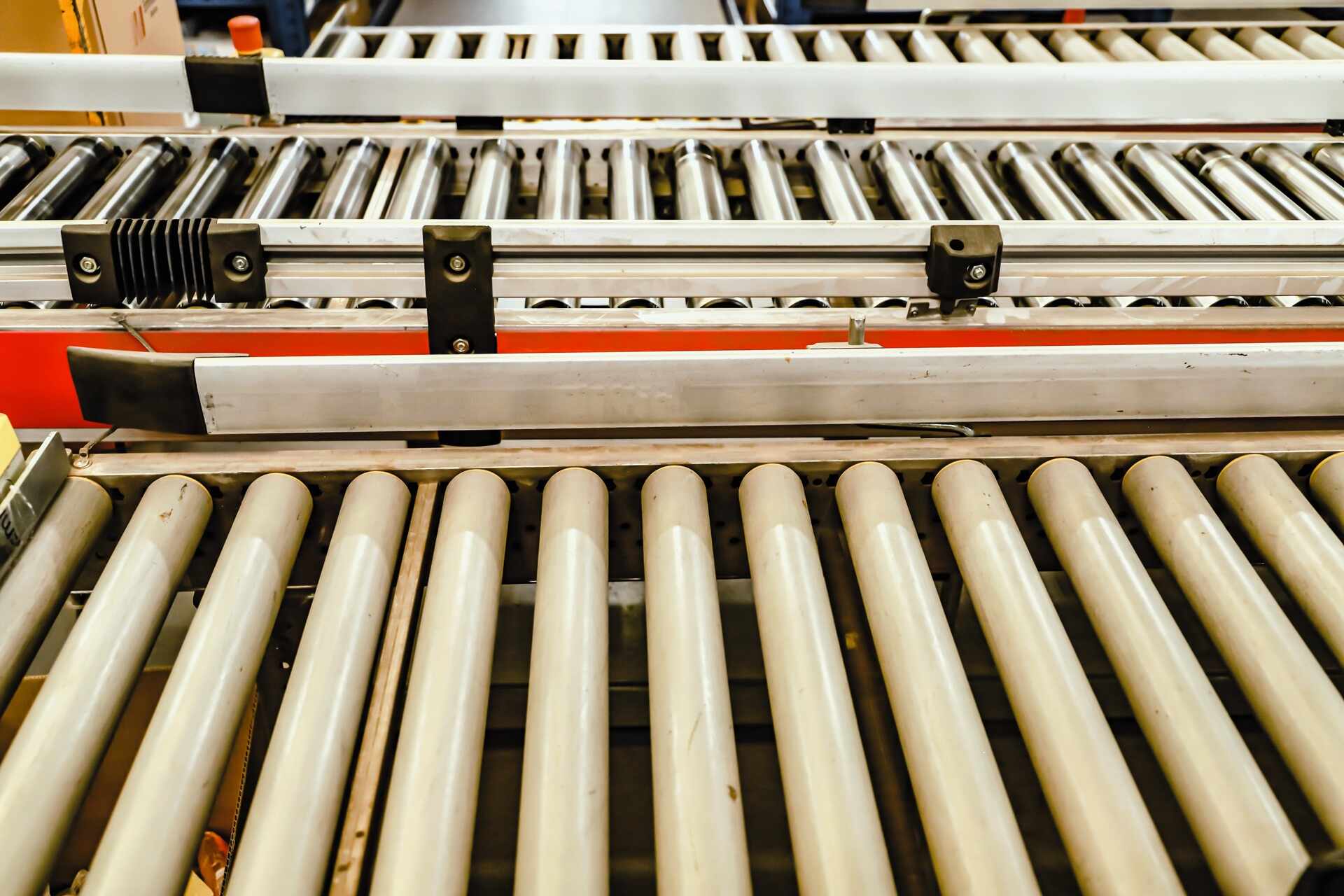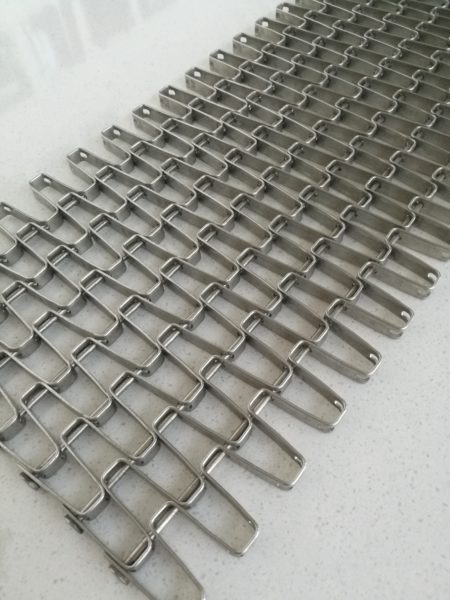The food manufacturing industry places unique demands on the conveyor belt systems used within their facilities. To ensure product safety, compliance with stringent hygiene standards, and efficient production, it is crucial to select a conveyor belt system specifically designed for food processing applications.
In this comprehensive guide, we will discuss the different types of food manufacturing conveyor belts available, from plastic modular belts to stainless steel conveyors, and their various applications within the industry. Additionally, we will delve into the key factors to consider when selecting the right conveyor belt solution for your food manufacturing facility, ensuring that the chosen belt meets your production and quality requirements while offering a long-lasting and reliable operation.
Working with trusted conveyor belt specialists like Change Parts Pty Ltd will provide you with expert advice and tailored solutions that cater to the unique challenges faced by the food manufacturing industry. Harness their knowledge and expertise to navigate the wide range of conveyor belt system options and make an informed decision that optimises your facility’s efficiency, safety, and productivity.
Armed with the right conveyor belt selection guide and insights from experienced professionals, you can invest in a conveyor belt solution that meets your food manufacturing facility’s unique needs, ensuring that your operation runs smoothly, efficiently, and in compliance with industry standards.
Exploring Different Types of Food Manufacturing Conveyor Belts
Various conveyor belt types are designed to meet the unique challenges of the food manufacturing industry, including meeting hygiene standards, resisting corrosive environments, and facilitating easy cleaning. A few widely-used types of food-grade conveyor belts include:
1. Plastic modular belts: These belts are formed from individual plastic modules connected by plastic rods. Plastic modular belts are highly versatile and can accommodate a variety of configurations, including straight lines, curves, and inclines or declines. Their flexibility and durability make them suitable for a wide range of food manufacturing applications.
2. Fabric belts: Fabric conveyor belts are made of synthetic materials such as polyester, polyamide, or aramid, which are FDA- and EU-compliant. They are versatile and can be customised to suit various applications, such as dough processing, cooling tunnels, and metal detectors. Fabric belts can handle high speeds and are easy to clean, making them ideal for food manufacturing facilities.
3. Stainless steel conveyor belts: Stainless steel belts offer excellent heat and chemical resistance, as well as antibacterial properties, making them a favourable choice for food manufacturing applications where high standards of cleanliness and sanitation are required. Their sturdy construction allows them to withstand extreme temperatures, rendering them suitable for baking, freezing, and high-pressure washdown processes.
4. Positive drive belts: These belts use a sprocket system to drive the belt instead of friction, ensuring consistent speeds and accurate product positioning. The absence of tension on the conveyor enables easy cleaning, making positive drive belts a popular choice in food manufacturing applications where frequent washdowns are necessary.
Applications of Food Manufacturing Conveyor Belts
Food-grade conveyor belts are utilised in a variety of applications within the food manufacturing industry, a few of which include:
1. Dough processing and conveying: Food-grade conveyor belts can accommodate the unique challenges of transporting dough, like transferring sticky dough from one stage to another, shaping, and cutting. Lightweight fabric and plastic modular belts can conquer these challenges by providing gentle handling and precision during processing.
2. Baking and cooling: Stainless steel conveyor belts are ideal for conveying baked goods throughout the baking process as they can withstand high temperatures and are easy to clean. Cooling tunnels for confectionery items also utilise these belts to provide sturdy support during cooling and hardening processes.
3. Packaging and labelling: Conveyor belt systems play an integral role in the packaging and labelling stages of food manufacturing by effectively transporting products to different machines for filling, sealing, and labelling operations. Versatile plastic modular belts are commonly used due to their adaptability in handling different product shapes and sizes.
4. Product conveyance and sorting: Food manufacturing conveyor belts transfer products between various processing stations, such as cutting, weighing, and grading, ensuring products reach the required destination efficiently and in the correct order. A combination of plastic and fabric belts ensures product safety and efficiency during these processes.
Key Factors to Consider When Selecting a Food Manufacturing Conveyor Belt
When selecting a food-grade conveyor belt for your facility, take the following factors into account:
1. Material conformity: The belt’s material must be compliant with FDA and EU regulations, ensuring that it is free from contaminants that may pose a risk to food safety.
2. Cleanability and sanitation: Choose a belt that is easy to clean and maintains hygienic conditions during food processing. Belts with open surfaces or modular designs facilitate efficient cleaning, minimising the risk of contamination.
3. Load capacity and versatility: Select a conveyor belt that can accommodate the weight, size, and shape of your food products, ensuring safe and efficient transportation throughout the manufacturing process.
4. Environmental conditions: Make sure to choose a belt suited for the specific conditions of your facility, whether it includes extreme temperature fluctuations, corrosive substances, or high-pressure washdowns.
Conclusion
Selecting the right conveyor belt system for your food manufacturing facility can have a significant impact on your operation’s efficiency, food safety, and productivity. By understanding the different types of food-grade conveyor belts available, their applications within the industry, and key factors to consider when selecting a suitable conveyor belt, you can make an informed decision that meets your facility’s unique requirements.
Partnering with conveyor belt specialists ensures access to a wealth of industry knowledge and bespoke solutions tailored to your food manufacturing facility’s specific needs. By working closely with experienced professionals, you can select the optimal conveyor belt system to elevate productivity, safety, and compliance within your food manufacturing operation.
Streamline your food manufacturing processes with expert insights from Change Parts Pty Ltd. Contact our team today to discuss your facility’s unique requirements, and let us guide you towards the ideal food-grade conveyor belts that enhance efficiency, safety, and productivity in your operation.




